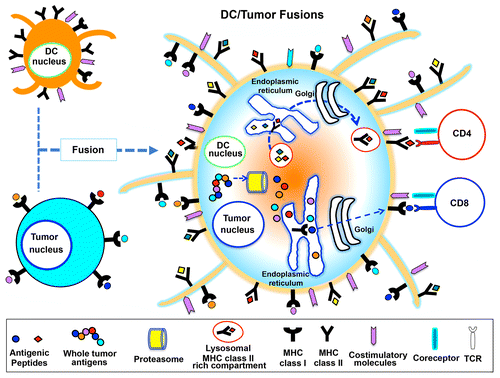Figures & data
Figure 1. Antigen processing and presentation by a dendritic cell fused to a cancer cell. Dendritic cell (DC)-tumor cell fusions express MHC Class I and II molecules, co-stimulatory molecules as well as tumor-associated antigens. These cell fusions are hence able to process cancer cell-derived peptides and form MHC Class I-peptide complexes in the endoplasmic reticulum, which are transported to the cell surface and presented to CD8+ T cells. Along similar lines, fused cells can synthesize MHC Class II molecules, load them with tumor-derived peptides and present these complex to CD4+ T cells. Globally, this results in the activation of potent tumor-specific cytotoxic T lymphocyte (CTL) responses.
